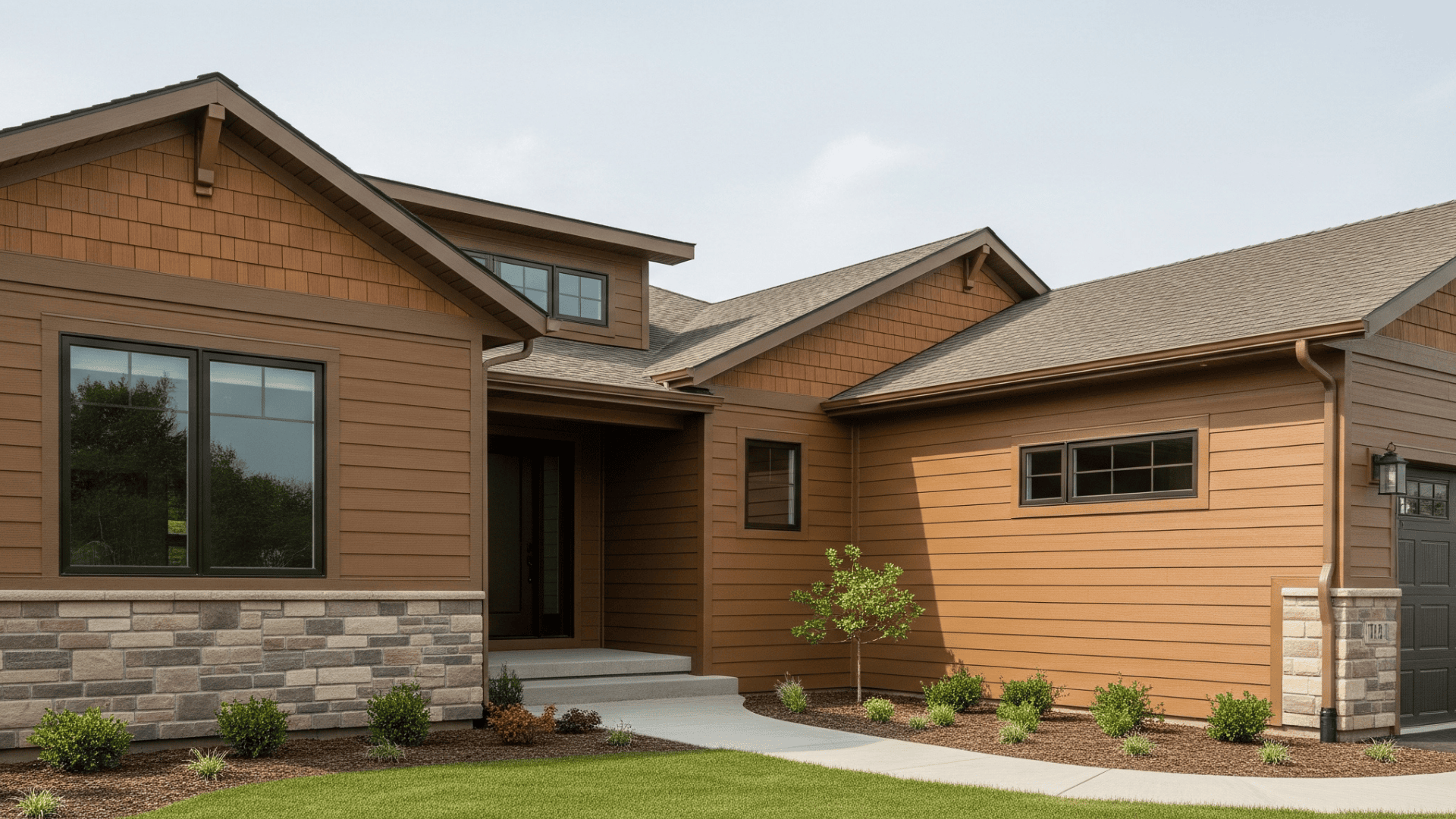When I first saw wood-grain metal siding, I was impressed by how real it looked. It combines the beautiful look of wood with the strength and low maintenance of metal.
Homeowners are making the switch from traditional materials to this modern option because it’s durable and looks great.
Unlike natural wood, you won’t have to worry about painting or sealing it every few years.
The technology has improved a lot over time, and today’s wood-grain metal siding offers realistic textures and a variety of color choices.
It’s a great way to add beauty and long-lasting quality to the exterior of your home without the upkeep that wood requires. Let me explain why this is such a game-changing option.
What Makes Wood Grain Metal Siding So Popular
Wood grain metal siding has revolutionized home exteriors with its perfect blend of beauty and practicality.
Unlike real wood, it won’t rot, warp, or require frequent staining.
The manufacturing process creates incredibly realistic textures that fool even close inspection. Modern coating technologies ensure colors stay vibrant for decades without fading.
Installation is faster than traditional wood siding, saving both time and money. Many insurance companies offer discounts due to their fire-resistant properties.
This siding withstands extreme weather conditions better than most alternatives.
Popular Wood Grain Styles and Textures
Wood-grain metal siding comes in different styles to suit various architectural preferences. Each pattern has its own visual appeal and installation features. The right choice depends on your home’s design and personal taste.
1. Cedar Shake Patterns
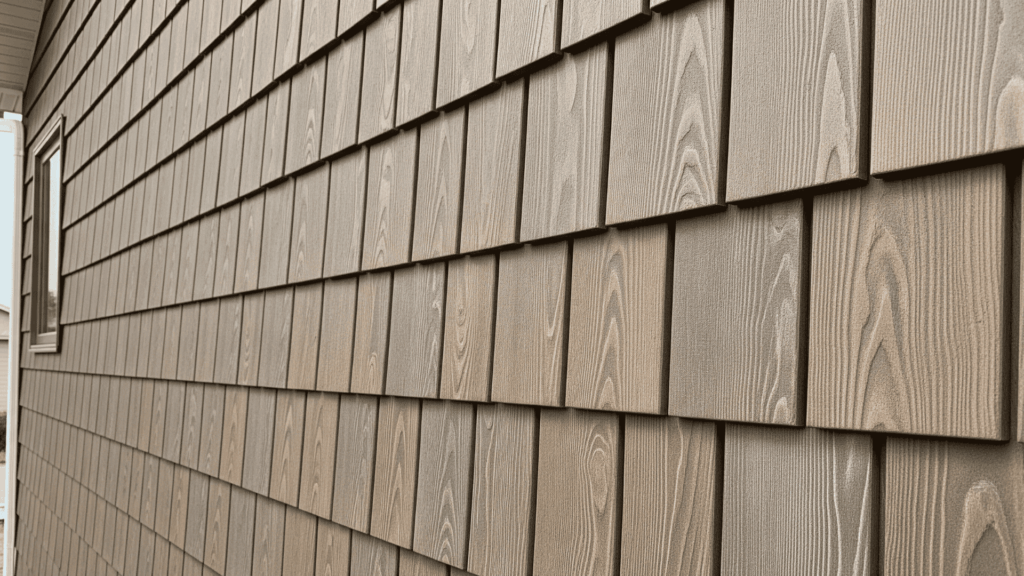
Cedar shake metal siding beautifully mimics the rugged charm of real cedar shingles without the hassle.
Each panel features random grain textures to deliver a precise, handcrafted look.
This style brings warmth and character to both traditional cottages and contemporary homes. Unlike wood, it won’t rot, warp, or demand staining.
Cedar shake siding is ideal for homeowners seeking a natural-looking exterior combined with modern convenience, offering lasting style and low maintenance.
2. Barn Wood Style

Barn wood metal siding recreates the timeless, weathered look of reclaimed barn planks.
It features realistic wood grain lines, knots, and naturally aged effects, adding rustic personality to any home.
This siding works well on ranch-style, farmhouse, or cabin-inspired homes.
While it delivers the feel of vintage wood, it eliminates the issues of warping, pests, and heavy maintenance.
The finish boosts curb appeal and suits outdoor stonework and metal roofing, ideal for effortlessly creating an aged, refined country character.
3. Smooth Log Cabin Look
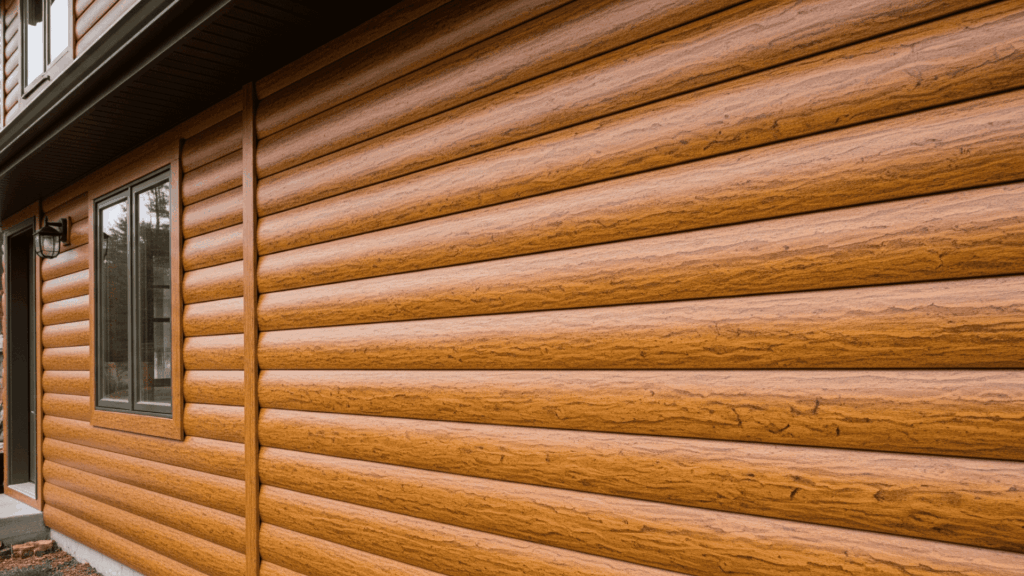
Log cabin metal siding delivers the cozy, natural appeal of full log walls without high upkeep.
It features textured bark finishes, realistic grain details, and rich wood tones that replicate the appearance of hand-hewn logs.
Perfect for mountain homes, cabins, or rustic-style retreats, this siding blends charm with weather resistance.
Unlike real wood, it won’t crack or require sealing.
Homeowners prefer the rustic look and warmth of logs without the cost or environmental impact, making it a nostalgic, practical, and durable choice.
4. Board and Batten Style
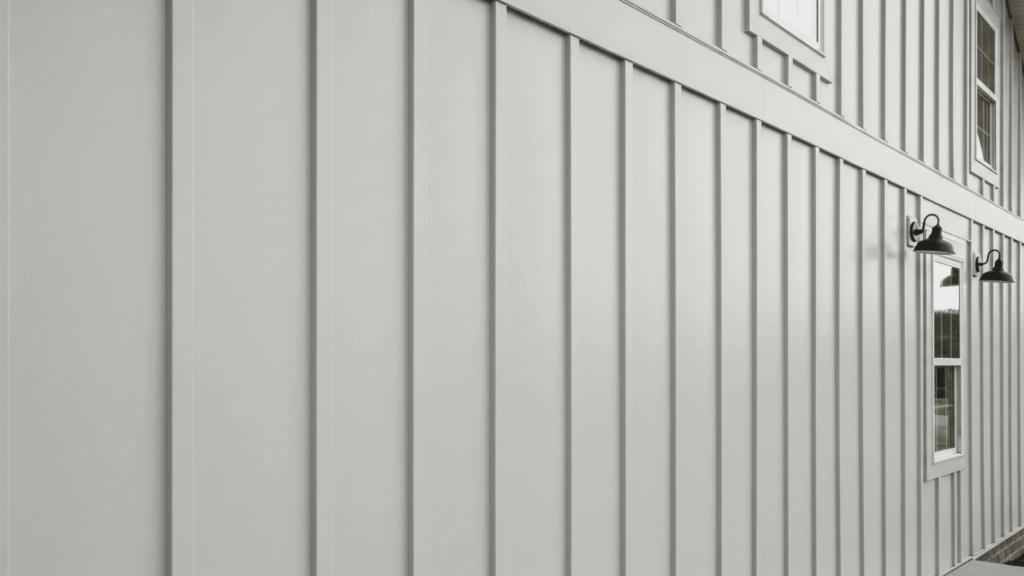
Board and batten metal siding creates clean, vertical lines using wide panels with slim battens that cover the seams.
It’s a perfect match for farmhouse architecture or modern minimalist exteriors.
The vertical layout draws the eye upward, adding a sense of height to smaller homes. With a crisp, structured look and weather-resistant performance, it suits both rural charm and urban sleekness.
Durable and low-maintenance, this style preserves its fresh look for decades, adding rhythm and balance to facades.
5. Horizontal Lap Siding
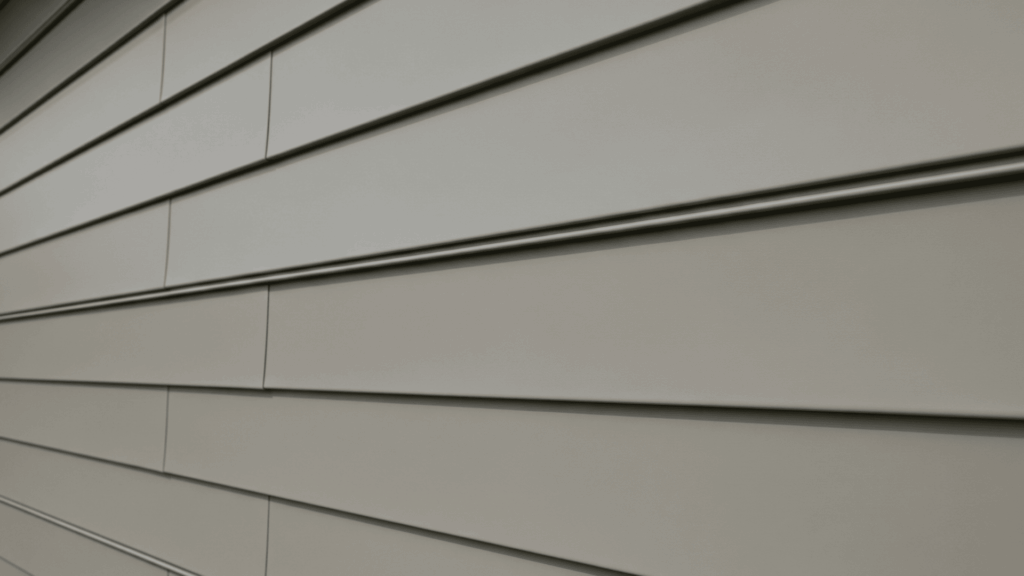
Horizontal lap siding replicates classic wood planks laid in a staggered, overlapping pattern.
This design offers timeless appeal and a strong visual structure, making it ideal for traditional, suburban, or ranch-style homes.
The horizontal lines add width and balance, while overlapping seams help shield against moisture and weather.
It’s versatile and widely loved for its familiar aesthetic and ease of installation.
Available in various wood grain finishes and colors, this siding adds durability, style, and heritage charm without requiring repainting or repair.
Color Choices That Transform Your Home
Choosing the right color greatly impacts your home’s curb appeal. Modern methods offer a variety of wood-like colors, while advanced coatings resist fading, keeping colors vibrant. Professional consultants can help coordinate with your roofing and landscaping.
1. Earth Tone Collections
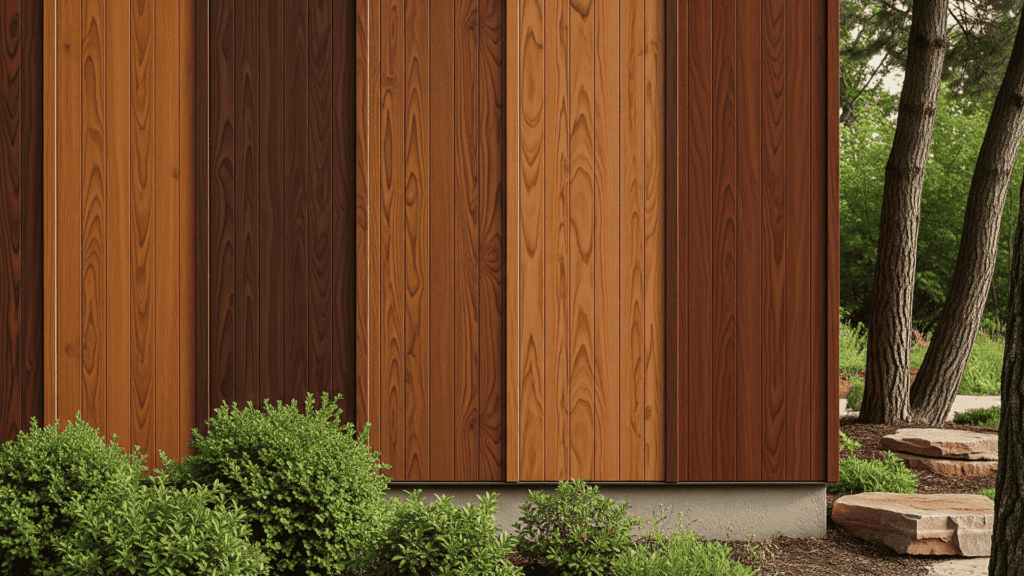
Earth tones are the top pick for wood-grain metal siding, offering warm browns, deep tans, and chestnut hues.
These natural colors harmonize with landscaping and outdoor settings, creating a smooth, inviting exterior. Earth tones never go out of style, making them a safe, timeless option.
They suit rustic and classic homes, boosting curb appeal with a grounded, organic look that complements stone, brick, or wood features.
2. Gray and Weathered Finishes

Gray and weathered wood grain finishes bring modern grace and texture to your home’s exterior. From soft driftwood to deep charcoal, these shades offer depth and visual interest.
Their aged appearance adds charm and complements stone accents, concrete walkways, and metal roofs.
Weathered tones suit contemporary or industrial homes, offering a muted, rich look that feels modern and naturally aged.
3. Bold Color Statements
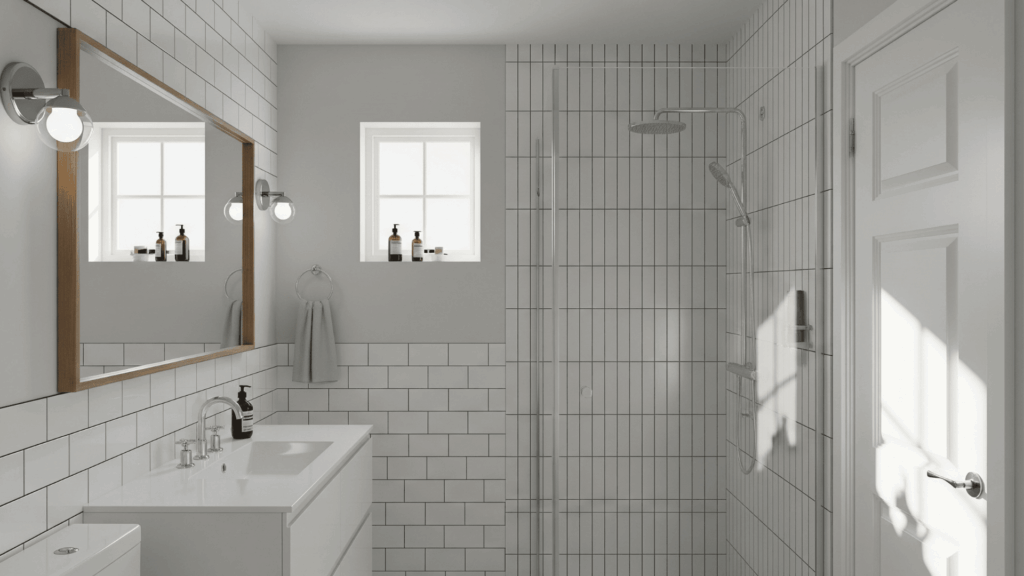
For homeowners who want to stand out, bold wood-grain siding colors like forest green and navy blue offer a vibrant personality.
These shades preserve the realistic wood texture while adding a modern flair. Ideal for accent walls, gables, or statement architecture, bold colors provide a unique contrast against neutral tones.
They’re popular in urban homes or eclectic designs, giving your exterior a fresh, artistic, and characterful edge.
Look at this quick overview of all the various color options available:
| WOOD LOOK | SIDING COLOR NAME | COLOR CATEGORY | BEST FOR |
|---|---|---|---|
| Cedar | Natural Cedar | Earth Tones | Traditional homes, natural landscapes |
| Oak | Aged Oak | Earth Tones | Classic exteriors, warm appeal |
| Barnwood | Weathered Gray | Gray/Weathered | Modern homes, stone accents |
| Birch | Light Birch | Gray/Weathered | Contemporary designs, bright spaces |
| Driftwood | Silver Driftwood | Gray/Weathered | Coastal homes with a weathered look |
Different Types of Metal Used
The selection of metal has a significant impact on the performance, cost, and long-term durability characteristics of siding. Each type of metal provides unique benefits for certain climate conditions and budgets.
1. Steel Siding Advantages
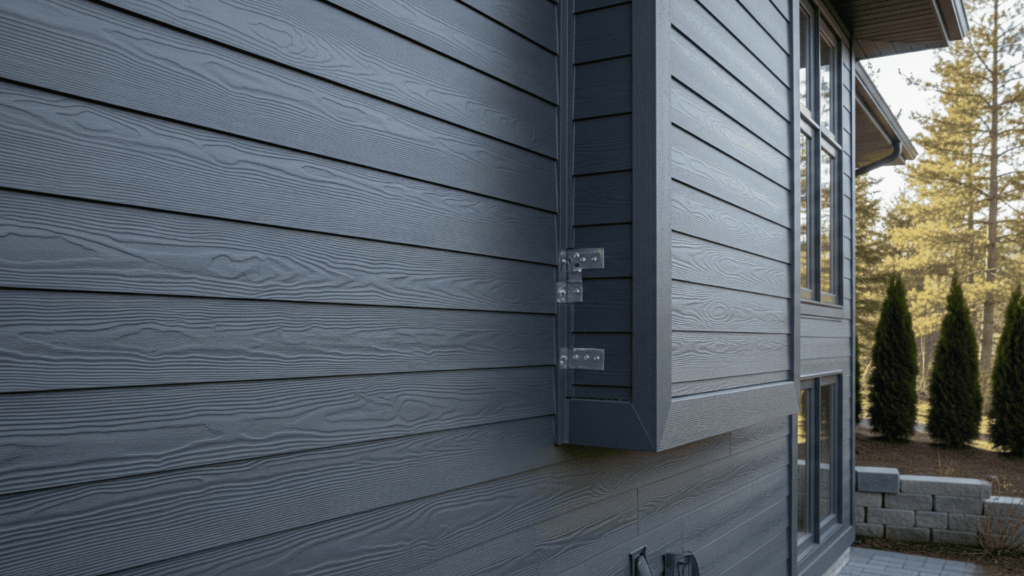
Steel wood-grain siding is known for its strength, impact resistance, and long-term durability. It’s typically more affordable than aluminum while offering similar longevity.
The extra weight improves wind resistance, making it ideal for areas with harsh weather. Steel also accepts high-quality paint finishes that resist fading, allowing colors to remain vibrant over time.
Its durability, affordability, and low maintenance make it a top choice for functional, attractive exteriors.
2. Aluminum Siding Benefits
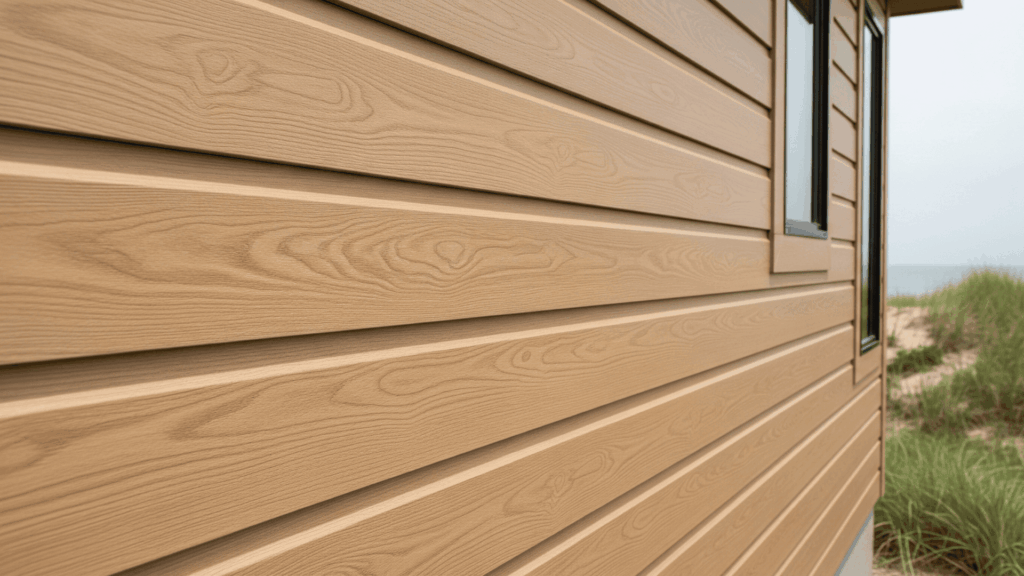
Aluminum wood-grain siding is lightweight, corrosion-resistant, and easy to install. Its natural ability to withstand salty, humid climates makes it perfect for coastal homes.
While usually more expensive than steel, it offers excellent durability and a sleek finish. Aluminum panels are simple to handle on-site, reducing labor costs.
The material requires minimal maintenance, retains its color, and provides homeowners with a stylish, weatherproof, and rust- and degradation-resistant solution.
3. Zinc and Copper Options
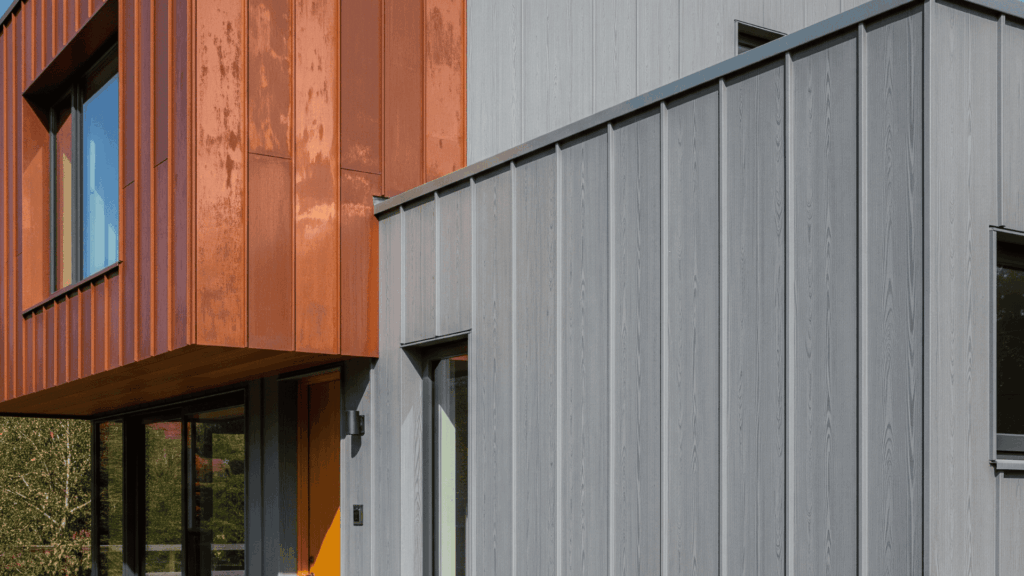
Zinc and copper are high-end siding metals available with wood-grain finishes. They offer a unique, sleek look and are prized for their exceptional durability.
Over time, both develop a beautiful natural patina that improves their visual character. While significantly more expensive than steel or aluminum, they deliver unmatched longevity and architectural appeal.
These materials typically require expert installation due to their weight and value, making them ideal for luxury or custom homes.
Installation and Maintenance Considerations
Wood-grain metal siding installation requires proper preparation and professional expertise for optimal results. The panels interlock securely to create weatherproof seals against moisture infiltration. Unlike wood, there is no need for staining, sealing, or painting maintenance.
Cost Comparison and Value
Wood-grain metal siding has higher upfront costs but delivers exceptional long-term savings.
With little to no maintenance and a lifespan of 40–50 years, it avoids the repainting and repair costs associated with wood or fiber cement.
Over time, these savings can offset the initial investment. Additionally, many homeowners experience a boost in resale value due to its durability and attractive curb appeal.
Compared to natural wood, which requires constant care, or vinyl, which may fade or crack, metal siding stands out as a value-packed, future-ready choice.
An overview of costs that one might incur:
| SIDING TYPE | INITIAL COST (PER SQ. FT.) | MAINTENANCE COST (10 YRS) | LIFESPAN |
|---|---|---|---|
| Wood Grain Metal | $8 – $14 | $500 – $800 | 40–50 years |
| Natural Wood | $6 – $10 | $4,000 – $7,000 | 20–30 years |
| Vinyl | $3 – $7 | $300 – $500 | 20–25 years |
| Fiber Cement | $7 – $12 | $2,000 – $4,000 | 30–40 years |
Choosing the Right Style for Your Home
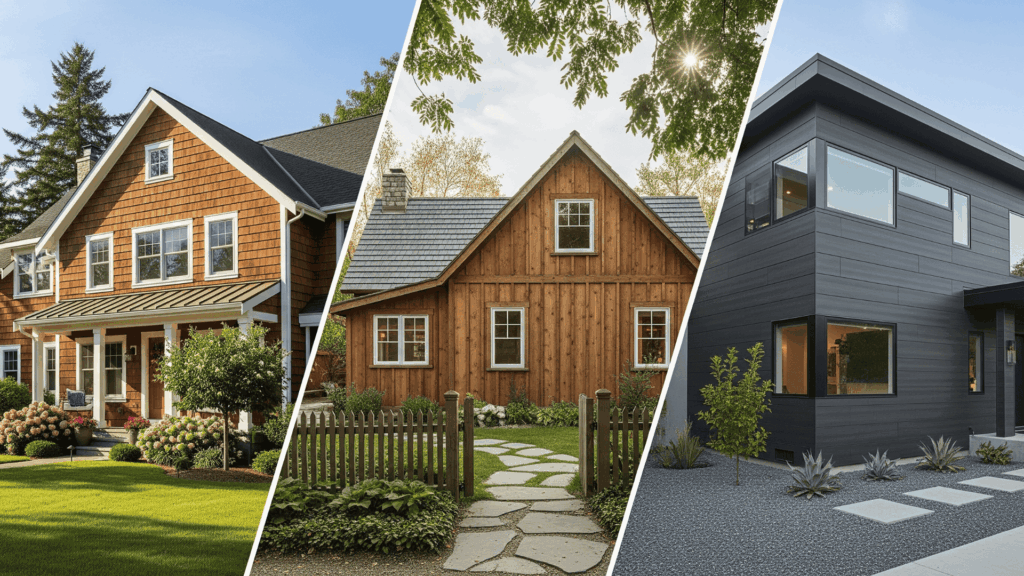
When choosing wood-grain metal siding, it’s important to consider your home’s architecture and location. Some key tips to help you make the best choice are:
- Match the siding to your home’s style: Traditional homes often suit cedar shake or barnwood finishes for a natural, rustic look. Modern homes pair well with sleek, smooth panels and uniform tones like charcoal, silver, or matte black.
- Consider your region’s climate: In hotter areas, lighter shades help reflect sunlight and reduce heat absorption.
- Consult local professionals: Ensure your chosen style complies with local codes and is suitable for your home’s structure.
- Test color samples: View them outside at different times of the day (morning, noon, evening) to see how light affects the color.
Taking your time ensures your siding upgrade enhances both the appearance and value of your home.
Conclusion
Wood-grain metal siding provides a great way to improve your home’s appearance while keeping maintenance costs low. It appears to be natural wood, but it holds up much better in rain, snow, or heat.
You don’t need to repaint it every few years, and it won’t rot or attract bugs. Many homeowners I’ve met end up loving how it improves their home’s curb appeal and how little effort it takes to maintain it.
As new textures and colors come out each year, you’ll find more realistic and stylish choices that mimic real wood perfectly. It’s a wise, long-term investment that protects your home and helps it stand out from the crowd.
If you’re helping a friend or neighbor consider home upgrades, send them this guide. They’ll thank you for pointing them toward something durable, beautiful, and future-proof. It’s a choice you won’t regret.

